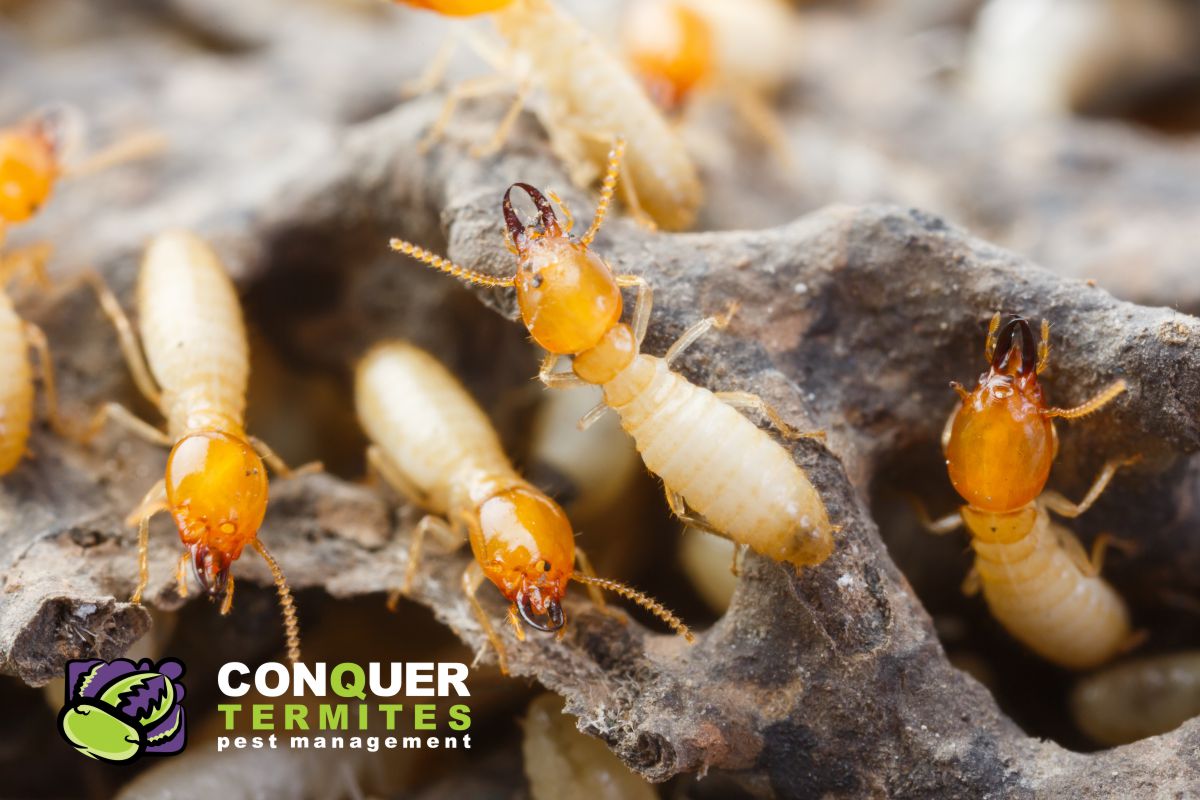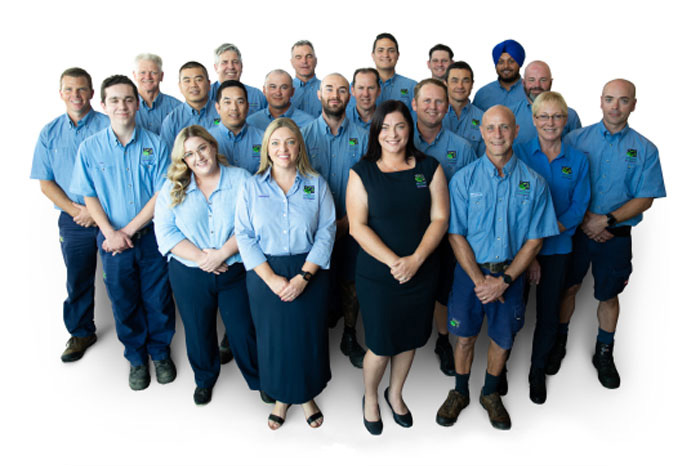How can you tell it is a Termite (White Ant)?
What do termites look like?
Ever wondered what termites look like? It’s not as if they are commonly seen out in the open. They always operate in a concealed manner, travelling through their mud leads and subterranean tunnels.
Below is a brilliant video that clearly displays all the castes of Termites found in a colony. Alates (winged reproductive termites), Soldiers, Workers and Nymphs (baby termites). Only missing seeing the Queen!
Termite Life Cycle
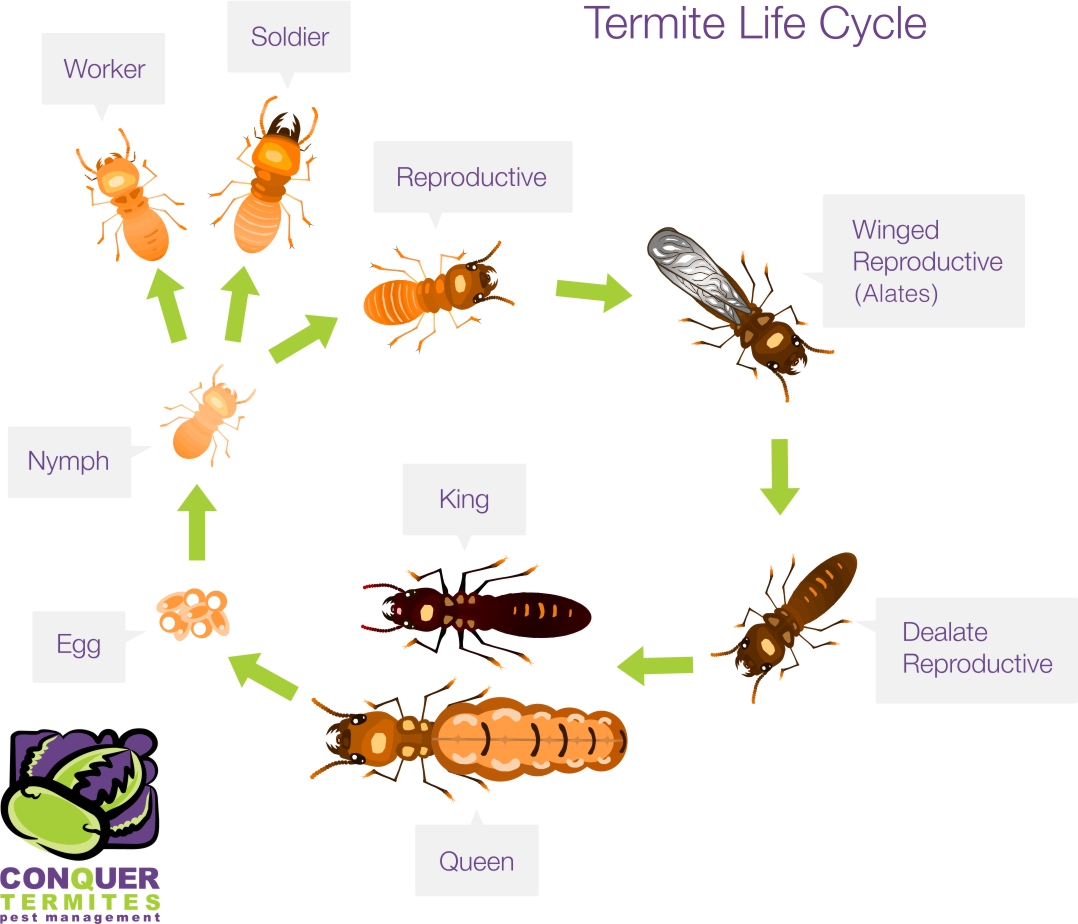
Did you find a Black Ant or Termite?
Termites are often confused for black ants. They are roughly the same size, and both operate socially in a caste system – Queen, Soldiers and Workers.
The black ant’s segmented abdomen helps you quickly distinguish the difference. They also have different food sources and operate in different environments. As a rule, termites are subterranean (in the ground), and Black Ants scavenge on top of the ground.
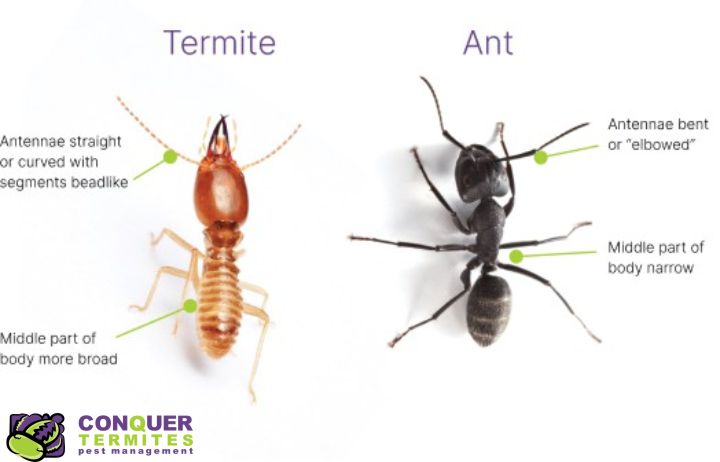
Five signs you have termites:
- Mud tubes or mudding: Termites build mud tubes as a protective shield to access food. If you see mud tubes along your walls or foundation, it strongly indicates termites.
- Damaged wood: Termites eat wood from the inside out, causing it to become thin and brittle. If you see any damaged or softwood in your home, it could be a sign of termites.
- Hollow sounds: If you tap on wood and it sounds hollow, it may indicate that termites have eaten the inside of the wood.
- Cracked or bubbling paint: Moisture buildup from termite activity can cause paint on wooden surfaces to crack or bubble.
- Termite noise: They make a tapping noise or a crunching munching sound.
What are the most common signs of termites?
Mudding - termite trail, mud lead
Termites build mud tubes as a protective shield from the elements and predators as they travel from their colony to the food source. These tubes provide the dark, warm, and humid environment they need to survive. The mud tubes are made by mixing soil and termite saliva to form a paste-like substance that dries to a hardness similar to plaster.
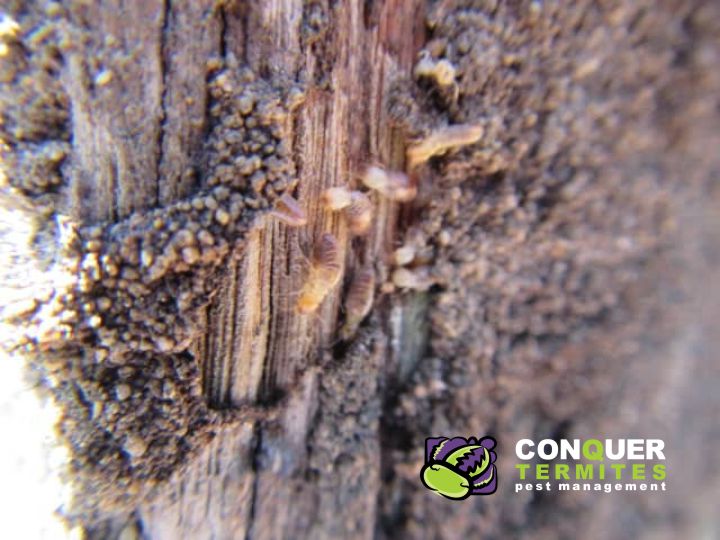
If you see mud tubes along your walls or foundation, it’s a strong indication of a termite infestation and you should have a professional inspect your home as soon as possible.
Mudding coming out of a wall
When you see a ‘mud’ pack coming out of a wall, it’s a clear sign you have termites. It could be a nest behind the wall or a bivouac. A bivouac is not a nest as it doesn’t have a nursery where the Queen lays her eggs.
It is normally a meeting area to feed the juvenile worker termites or grow their fungus source for their protein.

Hollow or soft timbers
Soft pine timber is highly desirable for termites and is often used for door and window frames, skirting boards, and other wood structures in the home. Termites will eat the timber from the inside out, leaving a thin layer between them and the outside world.
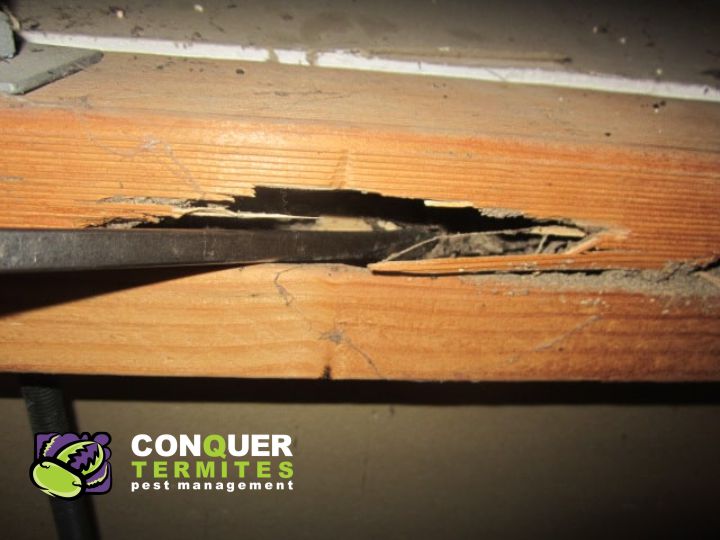
How can you tell by yourself?
Tapping on the suspected area and listening for a hollow sound is a simple way to determine if there may be termites present. Using a sharp knife to make a small slit and inspecting the interior of the wood can also provide evidence of termites.
If you see evidence of termites, you must immediately contact a professional for a thorough inspection and treatment. Sealing the opened area with tape will prevent the termites from fleeing away and allow the inspector to understand the full extent of the problem.
Cracked or bubbling paint
Moisture buildup from termite activity can cause paint on wooden surfaces to crack or bubble. When termites consume wood, they produce moisture as a by-product, and if this moisture accumulates in one area, it can cause paint to become damaged.
If you see cracked or bubbling paint, especially in areas where there may be termite activity, it’s important to have a professional inspect your home to determine the cause and take appropriate action to address any termite infestations.
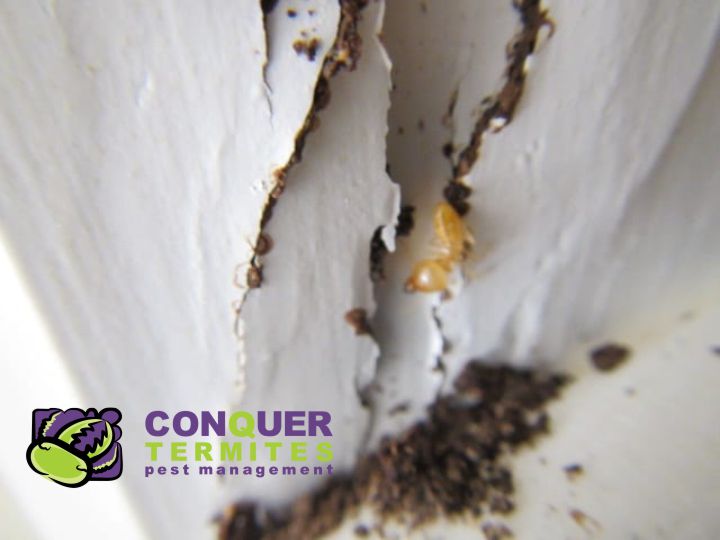
Termite noise - sounds termites make
Termites have unique ways of communicating with each other, including the use of sounds. When soldiers are alarmed, they will hit their heads against the wood, creating a knocking noise as a signal to evacuate.
On quiet nights, you may be able to hear the soft gnawing sounds made by worker termites as they scrape and eat the wood.
If you hear these sounds, it’s a strong indication of a termite infestation and you should have a professional inspect your home as soon as possible.
Termite damage of fungal decay/rot?
Termite damage and fungal rot are two separate issues that can affect the structure of the wood in a home.
Termite damage occurs when termites consume wood, breaking it down and weakening its structural integrity. This type of damage is often hidden and can go undetected for a long time, leading to significant harm to the structure of a building.
Fungal rot, on the other hand, occurs when certain types of fungi infect the wood, breaking down the cellulose and hemicellulose within it and causing it to become soft and crumbly. A musty odour and visible discolouration of the wood typically accompany this type of damage.
It’s important to differentiate between termite damage and fungal rot, as they require different types of treatment and repair. A professional inspection can help determine the cause of the damage and provide the necessary recommendations for addressing it.
Time to get the professionals in?
If you suspect that you have termites in your home, it’s important to seek the assistance of a professional to determine the extent of the infestation and the best course of action for treatment.
A Conquer Termites Inspector knows the best way to accurately assess the situation and provide a comprehensive report on what steps need to be taken to eliminate the termites.

